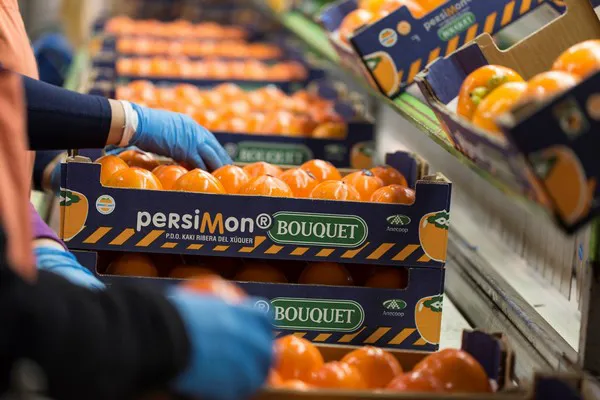The 2022 Rojo Brillante kaki production has been drastically reduced in the main producing areas of Spain since the first forecasts were made. The harvest, which is currently underway, will end almost a month earlier than last season.

"In the latest pre-campaign estimate, carried out in September, the production was expected to fall by around 60%. As the weeks have passed, this decline has gradually climbed to 70%, mainly due to the reduction of fruit sizes as a result of the stress caused by heat waves this summer," said Carlos Nemesio, sales manager of Anecoop's Kaki and Watermelon Program.
The cooperative is the largest producer of Rojo Brillante kakis in Spain, with a production potential of 200,000 tons that this year has been reduced to about 70,000. Around 50% of the kaki volumes exported by Spain are handled by Anecoop. "In spite of everything, the supply lines have been maintained for almost all our customers in all countries, although obviously not with the usual quantities," said the sales manager.
"At the production level, the stress on the trees has also taken a toll on the fruit's ripening, which is happening much faster than usual. The kaki harvest will end in late November, when it usually lasts until mid-December. We will try to extend the campaign as much as possible, as we always do, although we will hardly be able to make it to the New Year," said Carlos Nemesio.

This significant supply shortage is causing prices to remain high. "Kaki prices are twice as high as last year and remain stable; however, given the limited supply, those prices are still not high enough to make up for the increase in the production costs per hectare that many producers have suffered. It is worth recalling that, in addition to the increase in the number of necessary treatments against pests, as well as their cost, the cost of the CO₂ gas used to eliminate the fruit's astringency has also shot up, going from 190 to 550 Euro per ton."
According to Carlos Nemesio, sales have not stopped because of the high prices. "Prices regulate consumption to a certain extent, since, with such a drastic reduction in the harvest, kakis are not available in all channels, but mainly in the retail. There will always be kaki consumers willing to pay the market price to continue consuming it. The smaller-medium sizes aren't a problem either, as these sizes are more in line with what's demanded by Central European supermarket chains, where prices are more stable. The lack of large sizes, which go mostly to the wholesale markets, is bringing further imbalance between the supply and demand in Spanish and European markets."
For more information: anecoop.com
